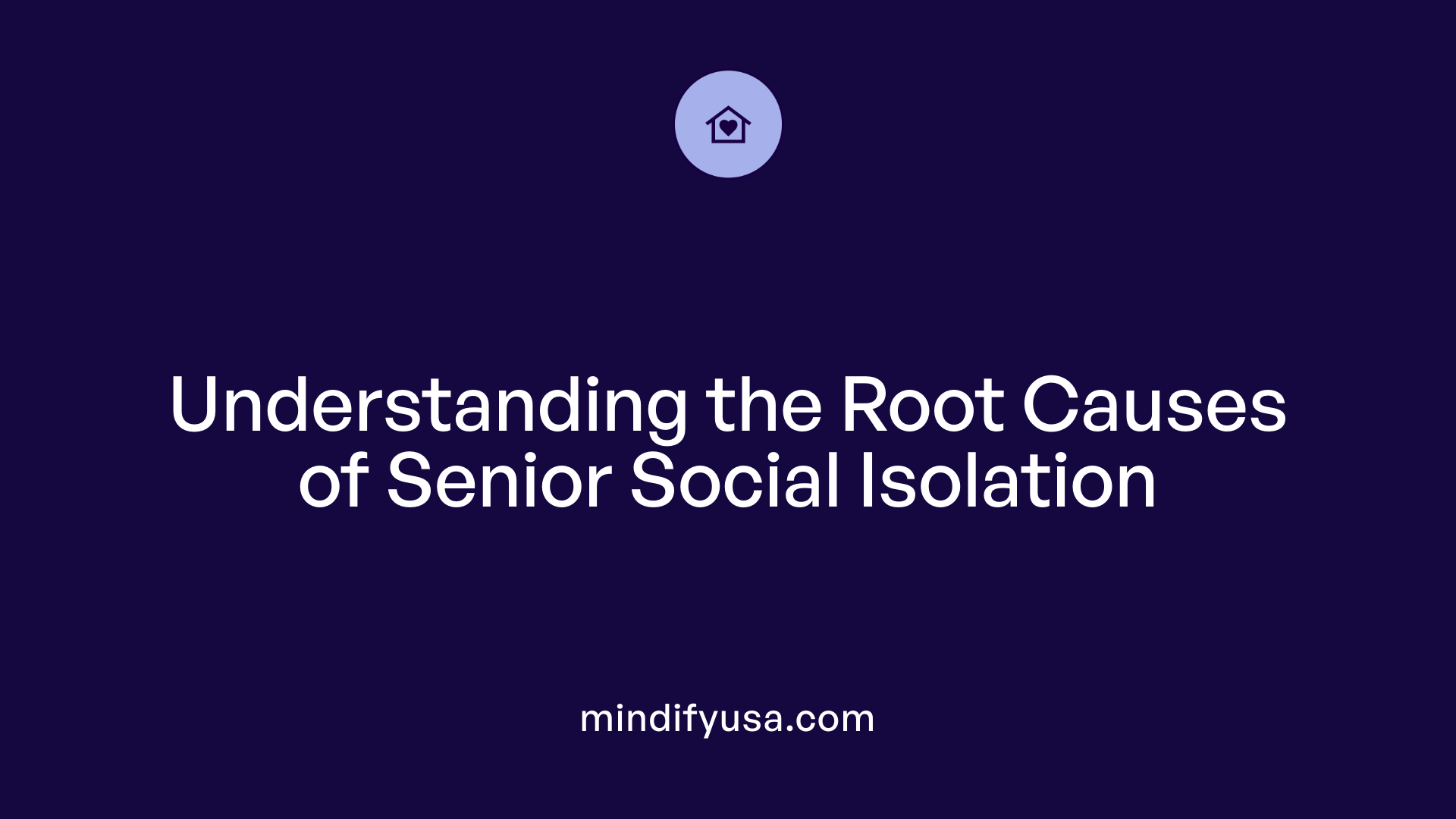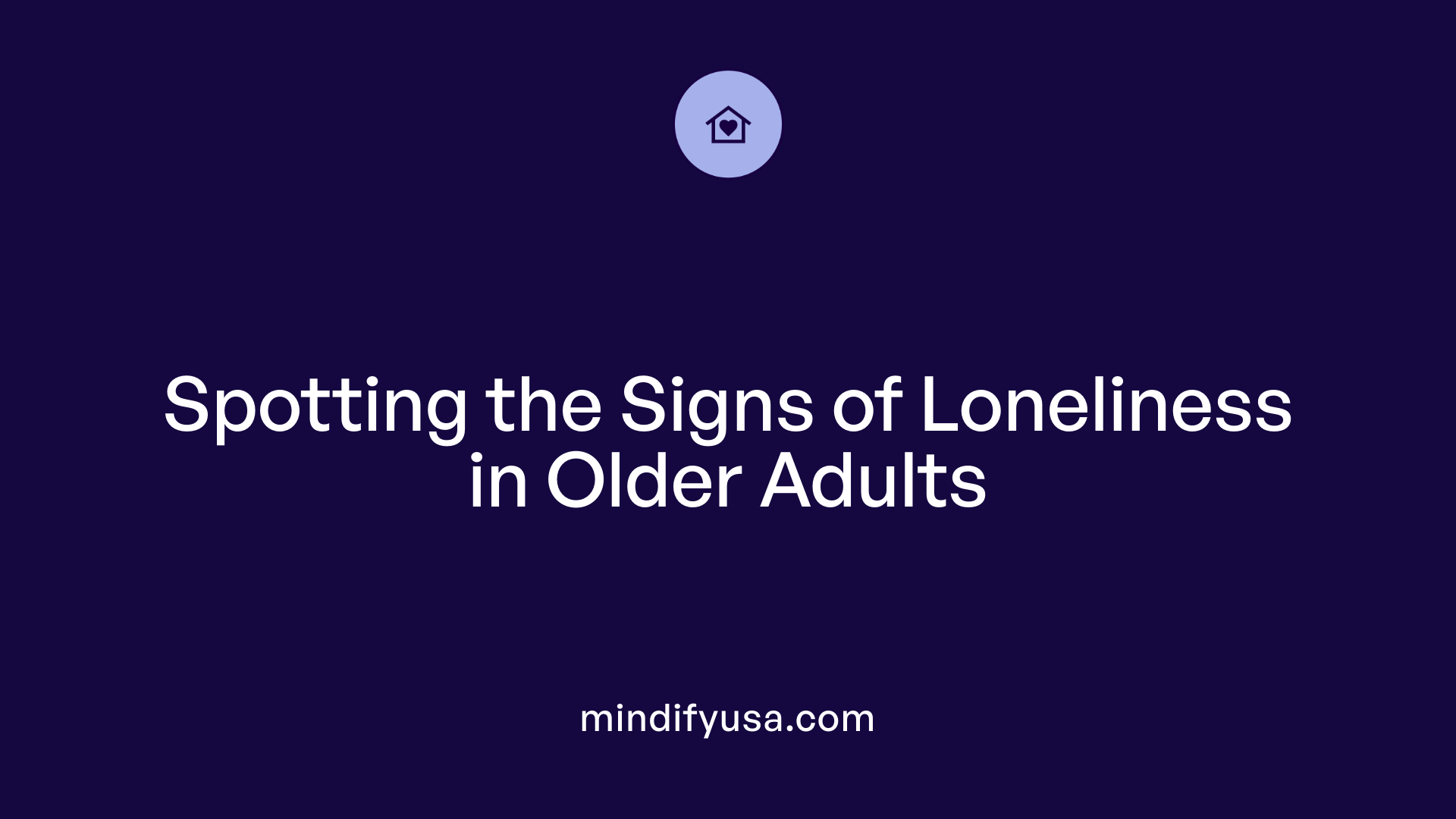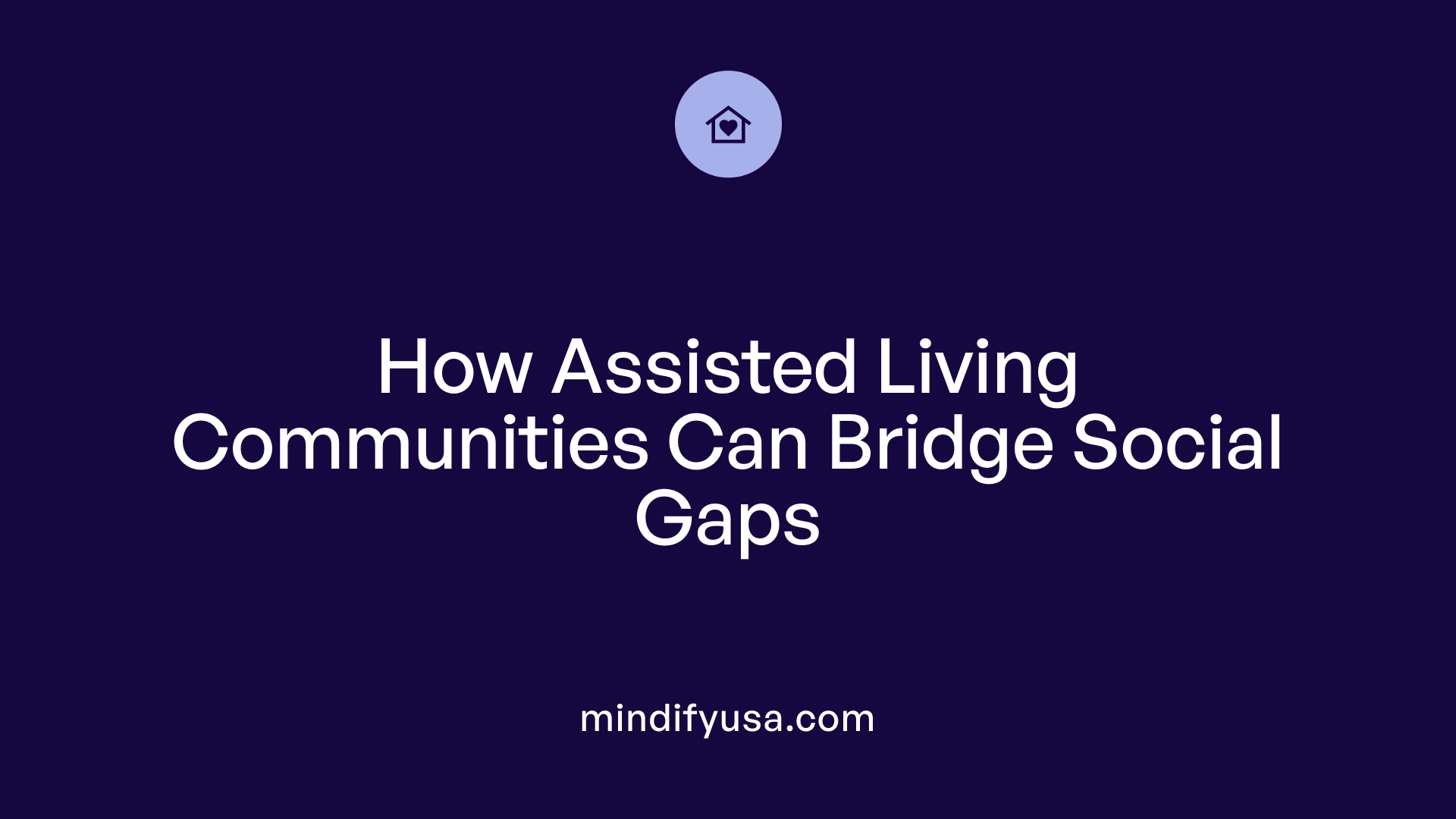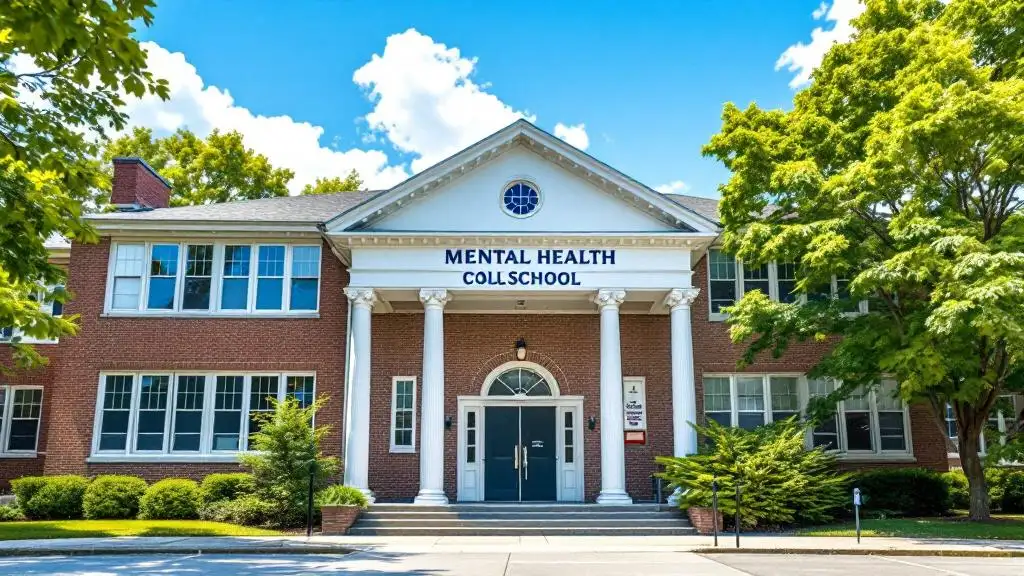Understanding Social Isolation Among Seniors in Care Settings
Social isolation and loneliness are pressing public health issues affecting a significant portion of the elderly population, especially those residing in assisted living environments. Nearly 50% of adults over 60 are at risk of social disconnection, which can lead to serious health consequences including increased risks of heart disease, stroke, dementia, and premature death. This article explores the causes, signs, impacts, and effective strategies seniors and caregivers can employ to foster meaningful social engagement and improve well-being.
Causes and Risk Factors of Social Isolation in Seniors

What are the causes of social isolation in elderly individuals?
The causes of social isolation among seniors are complex and stem from a variety of health, environmental, and social factors. Health problems such as mobility limitations, vision and hearing impairments, and chronic illnesses can physically restrict movement and social participation.
Loss of loved ones, including spouses, friends, and family members, reduces social networks and emotional support, deepening feelings of loneliness. Many seniors living alone face environmental challenges like transportation barriers, which hinder their ability to attend social events or access services.
Sensory impairments, like hearing loss which affects about 33% of those over 60, can create communication difficulties, leading to withdrawal from social interactions. Living in rural or remote areas may also limit access to community activities and healthcare.
Moreover, societal issues such as discrimination, marginalization—particularly for minority or LGBTQ2S+ seniors—and socioeconomic disparities contribute significantly to social exclusion. Emotional and psychological factors, including depression, anxiety, or hereditary tendencies toward social withdrawal, further elevate the risk.
Together, these factors form a cycle where physical health decline and environmental barriers deepen social disconnection.
Addressing these causes involves a collaborative effort: community programs to facilitate social engagement, accessible technology to connect virtually, transportation services, and healthcare initiatives focused on maintaining mobility and mental health.
Signs and Indicators of Loneliness in Elderly Residents

What signs indicate that an elderly person may be experiencing loneliness?
Recognizing loneliness in seniors involves observing a range of behavioral and emotional signs. One of the most common indicators is withdrawal from social activities and communication. An elderly individual may begin to avoid phone calls, visits from friends and family, or participating in community events that they previously enjoyed.
Mood changes are also significant. Signs like increased sadness, depression, vulnerability, or emotional distress can point to loneliness. Seniors may also feel unheard or unseen, which affects their confidence and overall sense of well-being.
Physical neglect and behavioral shifts are crucial signals. This includes neglecting personal hygiene, noticing changes in eating and sleeping patterns, or a rise in alcohol or other coping mechanisms. Unexplained physical symptoms, such as fatigue, headaches, or immune system issues, could also be linked to emotional distress from loneliness.
Cognitive difficulties, like trouble concentrating or understanding conversations, might be symptoms of mental strain caused by social isolation. Additionally, behaviors such as skipping meals, reluctance to go outdoors, or a sharp decline in communication are important to notice.
In summary, a combination of behavioral, emotional, physical, and cognitive signs can suggest that an elderly person is experiencing loneliness. Early identification enables caregivers and loved ones to intervene and provide support, helping improve their quality of life.
Health Impacts of Social Isolation on Older Adults

What does social isolation do to the elderly?
Social isolation and loneliness have profound effects on the health of older adults. Data indicates that nearly 25% of seniors are at risk of being socially isolated, with over 43% experiencing feelings of loneliness. These conditions are linked to significant health problems, including increased risks of heart disease, stroke, and dementia. Specifically, social isolation can raise the likelihood of heart disease by 29%, stroke by 32%, and dementia by nearly 50%. It also increases the risk of early mortality by more than 60%.
Beyond physical health, loneliness and social disconnection severely impact mental health. They are associated with higher rates of depression, anxiety, and cognitive decline. Chronic loneliness can activate stress responses, leading to emotional pain, chronic inflammation, and weakened immunity. These physiological responses make seniors more vulnerable to illnesses and complicate recovery.
While physical limitations, sensory impairments, and mobility issues contribute to social disconnection, societal factors such as living alone, lack of transportation, and societal discrimination further exacerbate the problem. Marginalized groups, especially LGBTQ2S+ seniors, often face additional barriers due to stigma and discrimination.
Healthcare providers play a critical role in screening for social isolation. Connecting seniors to community resources, encouraging participation in social activities, and fostering supportive relationships are essential strategies to improve their overall wellbeing. Addressing social isolation is vital not only for enhancing the quality of life but also for reducing healthcare costs, as socially isolated seniors tend to have higher medical expenses.
In sum, combating social isolation is a public health priority with wide-reaching benefits for emotional, cognitive, and physical health, especially in a rapidly aging population.
Strategies and Programs to Reduce Senior Loneliness

What are some interventions for social isolation among seniors?
Combating social isolation among older adults involves a variety of approaches tailored to individual preferences and needs. Community programs such as art classes, exercise groups, and book clubs create opportunities for social engagement and help build meaningful relationships.
Technology also plays a role, with tools like Zoom, FaceTime, and specialized platforms enabling residents to connect with loved ones and participate in group activities remotely. These digital solutions are especially valuable for those with mobility challenges or during times like the COVID-19 pandemic.
Personalized programs that focus on individual interests enhance participation and foster a sense of belonging. These might include hobby-based activities, interest-specific clubs, or support groups for unique health conditions.
Facilitating social connections through buddy systems, meet-and-greet events, and friendly visits encourages residents to form friendships and reduce feelings of loneliness. Staff members are trained in communication techniques to better engage residents, utilize assistive devices, and create an inclusive environment.
Involving family members and the broader community is essential. Family visits, community volunteer initiatives, and local events help integrate residents into the social fabric beyond the senior living environment.
Implementing these strategies not only alleviates loneliness but also supports overall health, mobility, and emotional well-being.
Role of Assisted Living Communities in Addressing and Preventing Loneliness

How can social isolation and loneliness in older adults be addressed?
Assisted living communities play a vital role in reducing social isolation and loneliness among seniors. They do so by creating an environment rich in opportunities for social engagement and community building. Shared meals, group activities, and common spaces encourage residents to connect naturally and foster friendships.
These communities also include health and social services that are tailored to the individual needs of residents. For example, personalized activity programs, therapy options, and counseling help address emotional and mental health concerns related to loneliness.
Structured programs such as art therapy, music classes, and organized exercise sessions are regularly implemented. These activities not only provide purpose and enjoyment but also promote social interaction and physical health.
Innovative solutions, including the use of technology, have become increasingly important. Video calls, social platforms, and digital messaging enable residents to stay connected with family and friends, especially during times when in-person visits are limited or challenging.
Staff training is crucial in fostering meaningful connections. Employees are educated in communication techniques, empathetic engagement, and recognizing signs of loneliness. This ensures that residents receive emotional support and feel valued within their community.
Overall, assisted living communities serve as comprehensive environments where social opportunities, personalized care, and technological tools unite to combat loneliness and improve the quality of life for older adults.
Barriers and Challenges in Combating Senior Social Isolation
What are the barriers to social engagement among seniors in care settings?
Many seniors face a range of obstacles that can limit their ability to stay socially connected. Physical limitations, such as mobility issues, hearing or visual impairments, and health conditions, are common hurdles. These challenges can make it difficult for them to participate in communal activities or leave their homes.
Lack of transportation and mobility support further restricts social interactions. Without accessible transportation options or nearby community resources, seniors may become isolated in their living environments.
In care facilities, staff shortages and resource constraints can impede efforts to promote social activities. When caregiving staff are overwhelmed or under-trained, residents may not receive enough encouragement or assistance to engage socially.
Psychological factors such as fear of change or anxiety about new social settings can also deter seniors from building new relationships or participating in group activities.
Financial concerns are another significant barrier. The costs associated with transportation, organized activities, or assistive devices may be prohibitive for some seniors, preventing them from accessing available resources.
Additionally, societal discrimination and marginalization, particularly of minority groups like LGBTQ2S+ seniors, can intensify feelings of exclusion and loneliness. Stigma, stereotypes, and lack of inclusive programming diminish feelings of belonging.
How can we overcome barriers to social engagement in assisted living settings?
Addressing these barriers involves a multifaceted approach. Improving accessibility through thoughtful design, adaptive technologies, and mobility aids ensures seniors can navigate their environments comfortably.
Providing reliable transportation services—whether through community partnerships, shuttle services, or on-site options—helps residents attend social events and visit loved ones.
Staff training focused on empathetic communication, cultural competence, and understanding individual needs plays a crucial role. Personalized care plans that respect each resident’s health status and preferences encourage participation.
Financial support programs and policy initiatives can make social activities more affordable. Subsidies or sliding scale fees reduce economic barriers.
Efforts to combat social stigma include education campaigns and creating inclusive programming that respects diversity, especially for marginalized groups like LGBTQ2S+ seniors.
Building a welcoming environment with ongoing staff development and collaboration with community organizations enhances social opportunities. These steps collectively foster a culture of participation, belonging, and social support for all seniors.
| Barrier Type | Examples | Strategies to Address |
|---|---|---|
| Physical limitations and sensory impairments | Mobility issues, hearing and sight loss | Accessible design, mobility aids, assistive tech |
| Lack of transportation and mobility support | No transit options for outings | Community shuttles, on-site transportation, partnerships |
| Staff shortages and resource constraints | Insufficient activity programming, caregiver burnout | Staff training, resource allocation, volunteer involvement |
| Psychological resistance or fear of change | Anxiety about joining new groups | Counseling, peer support, gradual exposure |
| Financial concerns and affordability challenges | Costs of transport, activities, assistive devices | Subsidies, sliding scale fees, grants |
| Societal discrimination and marginalization | LGBTQ2S+ stigma, cultural barriers | Inclusive policies, diversity training, tailored programs |
Understanding and tackling these barriers is essential for creating a supportive environment that promotes social well-being among seniors. Through combined efforts in accessible design, resource availability, staff education, and inclusive practices, it is possible to reduce social isolation and enhance quality of life for older adults.
Enhancing Well-Being Through Connection
Combating social isolation in assisted living requires a concerted effort from care providers, families, and communities. Implementing diverse strategies such as engaging activities, technological tools, and inclusive programs can help seniors feel valued, connected, and purposeful. Recognizing and addressing barriers, tailoring interventions to individual needs, and fostering a supportive environment are essential in reducing loneliness and enhancing overall health. As the population of older adults continues to grow, the importance of social connection as a cornerstone of holistic care becomes increasingly clear. Through collaborative efforts and innovative solutions, we can ensure that aging in assisted living is a fulfilling and socially enriching experience for all seniors.
References
- How Senior Living Staff Helps Combat Resident Social Isolation
- Social Isolation Among Older Adults in Long-Term Care: A Scoping ...
- Loneliness and Social Isolation — Tips for Staying Connected
- [PDF] Loneliness and Social Isolation in Long-Term Care
- Social Isolation Resources - Senior Medicare Patrol
- Addressing Loneliness and Social Isolation in Seniors - Haven Health
- A silent struggle: How to deal with senior isolation and loneliness
- Breaking the Cycle of Senior Loneliness: The Role of Senior Living ...






































































































